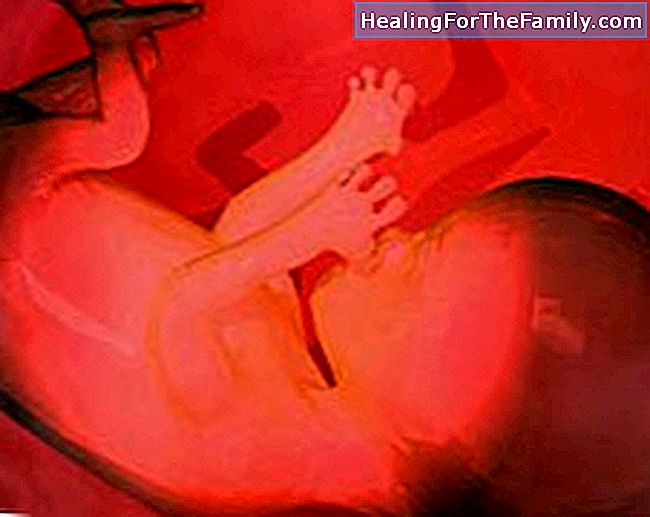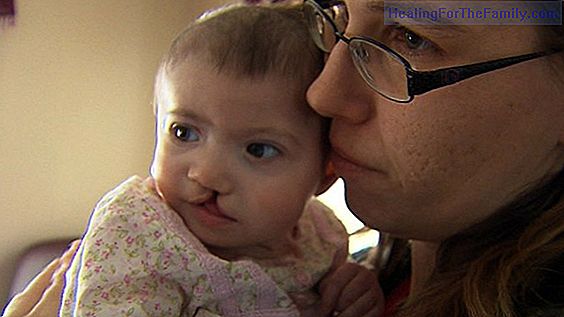27 Weeks of pregnancy
At this stage of your pregnancy, your baby grows at a surprising rate, gaining weight and size significantly in the seventh month of pregnancy. The pregnancy week by week has reached week 27 of pregnancy and there are many changes that you will notice in your body and in your state of health. The da
At this stage of your pregnancy, your baby grows at a surprising rate, gaining weight and size significantly in the seventh month of pregnancy. The pregnancy week by week has reached week 27 of pregnancy and there are many changes that you will notice in your body and in your state of health. The darkening of some areas of your skin and the emotional changes of the seventh month of gestation are normal when the pregnancy reaches the 27th week of pregnancy.
Changes in the body of the pregnant woman

In week 27 of pregnancy you will notice that the linea alba in your belly is already very evident and it shows a lot. The linea alba is a brown line that crosses the abdomen vertically in pregnancy and is due to an increase in melanin in that area of the skin.
Another significant change is the increase in breast volume. The breasts have increased up to three times their size and as a result the veins are seen under the skin. Keep your breasts very hydrated to prevent the appearance of stretch marks. The mammary areola is getting bigger and the nipples have darkened. It may appear small bumps called "Morgagni tubers". Some milk may appear on the nipples. You will also notice that the nipples have darkened.
During the 27th week of pregnancy you can start to feel pain in the pubic area when doing some physical activities such as going up or down stairs, walking or separating the legs. This is because the pelvis, which is constituted by two iliac bones, joined by the sacrum bone in the posterior part, and by the pubic symphysis in the anterior part, dilates slightly due to the action of the hormone relaxin, with the goal of allowing the baby to pass at the time of delivery.
To relieve pelvic pain use a pelvic belt to help stabilize the hip, perform exercises aimed at improving the stability of the pelvis and back and apply dry heat in the painful area. Treatment by a physiotherapist can be very beneficial.
Development and growth of the baby in pregnancy

In the week 27 of pregnancy el, the baby weighs approximately 800-900 grams and measures around 36-37 centimeters. Your internal organs are finishing forming. In the digestive system, the liver undergoes rapid maturation. In the lungs, a fundamental substance is produced for its proper functioning outside: the surfactant. The nervous system continues its maturation process and thanks to this evolution, the eyelids, which until now have remained united, begin to open. The eyelashes are also developing.The skin begins to swell and protect itself with a whitish substance called vernix caseosa, which will accompany the baby until the moment of birth. Your body continues to accumulate fat and will gradually start to look more plump.
Health and emotions during pregnancy
A pregnancy test, which takes place between weeks 24 and 28 of pregnancy, is the
O'Sullivan testto all pregnant women, which consists of determining blood glucose one hour later of ingesting 50 grams of glucose. If the result is positive, a more complete test called oral glucose overload (SOG) is performed, with the aim of making a definitive diagnosis. When the presence of gestational diabetes is confirmed, the pregnant woman is usually referred to a pathological pregnancy unit, where it is followed and controlled jointly by an obstetrician and an endocrinologist.Gestational diabetes consists of an alteration of the metabolism of carbohydrates. The pancreas does not produce enough insulin and there is an increase in blood glucose levels (hyperglycemia). It usually disappears after childbirth, but tends to reappear in consecutive pregnancies. Likewise, having gestational diabetes increases the likelihood of developing type II diabetes throughout life.
Gestational diabetes is usually asymptomatic and the only way to reduce the negative effects it can have on maternal-fetal health is to perform a systematic screening during pregnancy. When a pregnant woman with gestational diabetes does not receive treatment, a series of complications can appear, such as the threat of premature birth, preeclampsia (pregnancy-induced hypertension), infections, especially vaginal and urinary tract infections, obstetric trauma (increase in the number of caesarean sections), macrosomia or excessive growth of the baby inside the uterus, delayed intrauterine growth of the baby and, in the newborn: hypoglycaemia, respiratory distress and jaundice.
Diet and feeding in pregnancy
Performing breathing and relaxation exercises, as well as practicing regular exercise every day is as important as following a varied and balanced diet in pregnancy. However, in some cases, the worry of gaining too much weight causes some pregnant women to restrict their consumption of carbohydrates or initiate diets not prescribed by the doctor. On the other side of the scale are pregnant women who tend to overeat because they understand that their babies will be healthier.

Other frequent errors in pregnancy are the absence of dairy, vegetables and fruits, which harms the formation of the baby, follow the diets of friends or pregnant relatives (each organism is different) and consume vitamin supplements or self-medicate on their own without supervision of the doctor.
Curiosities of week 27 of pregnancy
It is a good time to perform an ultrasound in 3 dimensions. At week 27 of gestation, the baby is the right size to visualize it well in parts. In general, couples go to private centers to see their baby's face before it is born as a souvenir. It is only done in public hospitals when a congenital anomaly is diagnosed in the fetus when performing 2-dimensional ultrasound.












